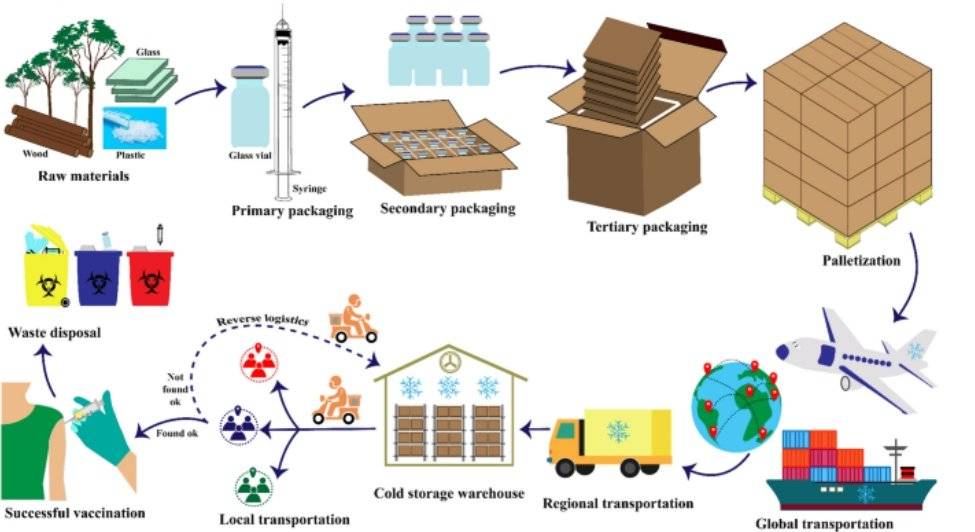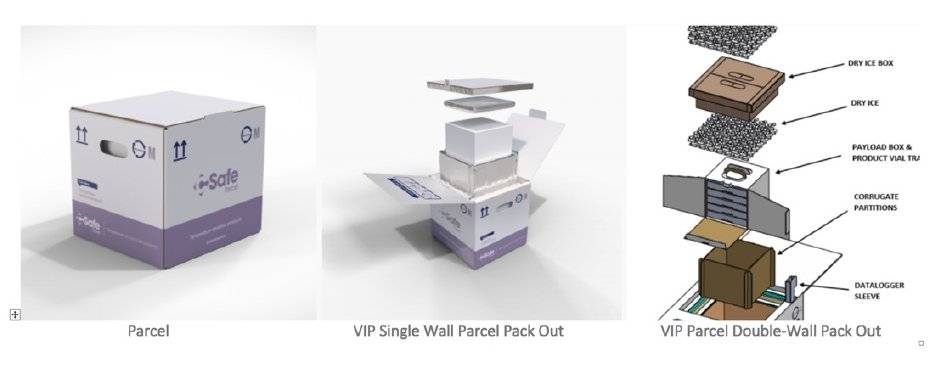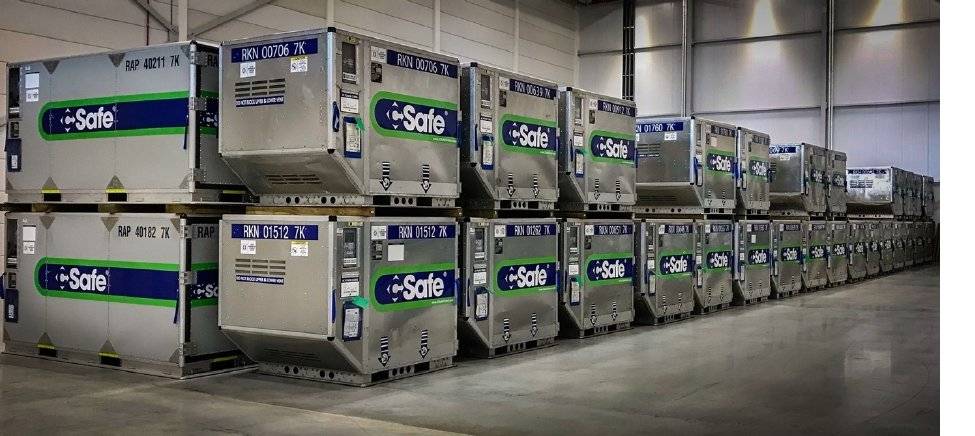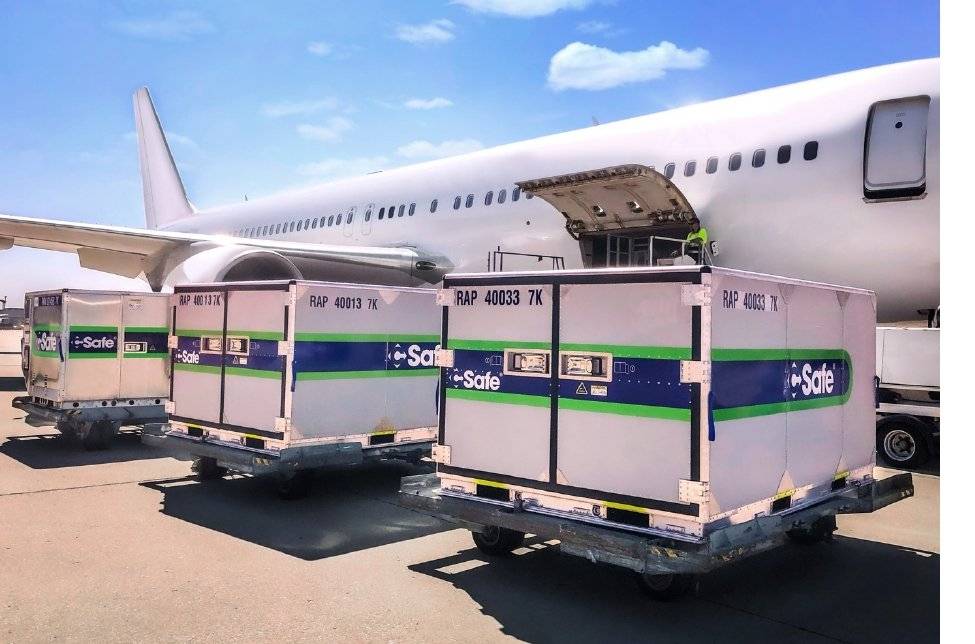Introduction
Since the beginning of the COVID-19 pandemic, the International Air Transport Association (IATA) has become the central entity for the air transport of pharmaceutical cargo.
Before it was contained in the IATA Perishable Goods Regulations (PCR) manual, but later it was extracted to a separate IATA publication, the Temperature Control Regulations (TCR).
The guidance is based on the practice of major airlines’ and biggest airport handling companies, and also on the recommendations of World Health Organization (WHO), International Federation of Pharmaceutical Manufacturers and Associations (IFPMA), World Customs Organization (WCO), World Trade Organization (WTO) and International Federation of Freight Forwarders Associations (FIATA), which contribute to the solution of the newly emerged global problem of the epidemic and the planned vaccination campaign.
TCC Logistics
Problem of transportation of temperature sensitive goods should include questions of secure warehousing, packing, handling and carriage of goods that need to be catered with a particular temperature range during all cargo supply chain.
When handling temperature controlled cargo, the following issues must be considered:
- Temperature (and in some cases humidity) range allowed.
- Permanent temperature control and record devices.
- Cargo storage must be provided without temperature changes.
- Special problems (e.g. delays) that may compromise the nature of the cargo.
Both the Ground Handling Agent and the Carrier are responsible for keeping the safe temperature of the cargo. But it is the manufacturer’s responsibility to provide complete guidance about optimal conditions of the product, which are understandable to all participants in the transportation process.
It should be guaranteed the reliable conditions of airport warehouse storage, safe terminal and ramp handling operation, the inner conditions in aircraft cargo compartments, as well as possible delays.
The each cargo holds of aircraft have their own temperature range. We should know it for each type and configuration of aircraft, which hold will be used (i.e. main or lower deck, forward or aft compartment) before decide to carry temperature controlled cargo.
In addition, if an electrical power supply is required, we must be sure that all transit points have an appropriate voltage and power with compatible connections.
Pharmaceutical Products
Pharmaceuticals are products intended for use in the diagnosis, cure or prevention of diseases. The main use of these products is achieved through chemical or biological impact, or human metabolism. This category of products includes drugs, biologics agents (vaccines and therapy care products), and medical devices.
Also, very close with this category of cargo are Life Sciences Products including human organs, human tissue samples, blood tests etc., which regulated with the same rules with Pharmaceutical Cargo.

Drug Products
Drug products are produced using chemical processes. They are aimed at influencing an organ or some function of a person by metabolizm in the body. They must be officially recognized by an appropriate medical or pharmacopoeia authority.
Biological Products
Biologics differ by "biological" production process (instead the chemical way of drugs producing). Biological products include:
- Blood and blood derivatives.
- Therapeutic products (including biotechnology medicines).
- Vaccines (viral and bacterial vaccines, toxins, anti-toxins, and allergenic products).
Medical Devices
Medical devices are an apparatus, instrument, implant, or similar tools intended for the use in the aid medical therapies or surgery.
TCC Packages
Two types of packaging are applied to transport temperature controlled goods – Passive packages and Active shipping systems.
Passive package
Passive packages (or containers) is a combination of insulating materials and cooling agent to maintain a temperature range. Although they do not require outside intervention to operate, they can only maintain a temperature range for a certain period of time before they expire, making them an effective option for short trips, carriage by air or for low volume of cargo.

The cooling agent can be wet ice, dry ice or frozen gel packed in polyethylene bags or cool packs specifically designed for maintaining low temperatures.
Wet ice is an inexpensive and widely available refrigerant but it has a limited life and is not effective for extremely low temperatures. The water run-off from its fusioning means that wet ice must be classified as “wet cargo" with using wet-protected packages only.
Instead of wet ice, Dry ice (carbon dioxide) passes directly into the steam without fusion at -78.5°C, which make it a good cold agent for deep freezing product. However, dry ice can damage goods when placed in direct contact with them.
Since dry ice is classified as dangerous goods, a corresponding note must be made in the Air Waybill and a Dangerous Goods Declaration must be issued.
Active shipping system
Active shipping systems are used on air transportation and they are actually large cargo thermostatic containers with internal batteries for powering. The temperature in the container is kept automatically by cooling and heating system with sensors and fans.
Shipment logistics with thermostatic containers is very complicated and should guarantee a keeping temperature range without any disruption throughout all stages of the journey from Seller’s warehouse to Receiver destination:
- Moving a well-prepared container from the airport of departure to the place of loading (EXW), loading and then moving back to the airport of departure.
- Terminal, customs, and airport handling procedures prior to loading into the aircraft (including procedures in case of possible delays or cancellation of the flight).
- Throughout the flight, including technical landings and possible delays there.
- Supervised storage at the airport of transit when using several flights along the route of the cargo.
- Airport handling, customs & terminal procedures, and then loading into truck to be delivered to the place of destination.
All this movement must be supported by constant temperature control and compliance to quality protocol for full awareness and customer satisfaction. New models of thermostatic containers can transmit such data online when Wi-Fi is connected.

* * *
Transportation of pharmaceuticals is a very sensitive topic because it directly concerns human health, so it is worth paying maximum attention and competence to this issue.
Note: This article has been prepared using official IATA & WHO Regulations and other open Internet sources.

